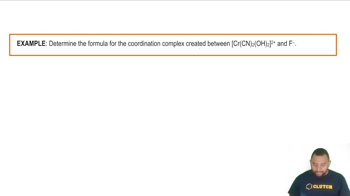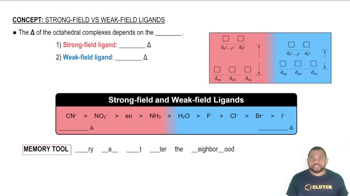There are two possible [M(OH)4]- complexes of first-series transition metals that have three unpaired electrons.
(a) What are the oxidation state and the identity of M in these complexes?
(b) Using orbital diagrams, give a valence bond description of the bonding in each complex.
(c) Based on common oxidation states of first-series transition metals (Figure 21.6), which [M(OH)4]- complex is more likely to exist?
<QUESTION REFERENCES FIGURE 21.6>-





